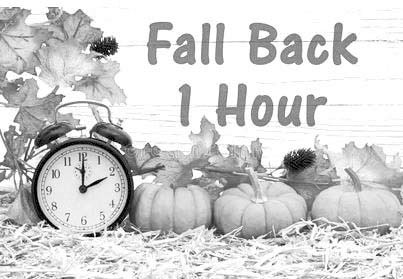Eagle Lake Remembers
Have you ever come rushing into church on Sunday morning just as the last hymn was being sung? Seeing people beginning to leave made it clear that my watch was wrong! Daylight Saving Time (DST) has ended.
We will return to our Standard Time until we spring forward for another period of Daylight Savings Time, in March 2025, second Sunday, until the first Sunday in November 2025.
Now to the other clocks. With our smartphones do we look at other clocks? Yes, often. Perhaps we need a “how to change the microwave clock day!” At least the clock in my car will finally be correct, not having changed it last time.
There is little more embarrassing than to realize the clock has not been changed and your world is operating on a different time zone. At least that last hymn had four stanzas, enough time to lift a voice briefly before the church pews emptied.
Again, we shift one hour back in the fall, and an hour forward in the spring hence our saying ‘spring forward and fall back.’ The 2 AM hour of change on Sunday often fools us as we forget to properly reset our clocks.
How did we get here? In 1784 Benjamin Franklin wrote an essay to the Parisians suggesting that if people would change their sleep schedules with the sun, they could save millions on candles and lamp oil each year. In 1895, George Hudson in New Zealand came up with a two-hour shift in time to allow him and others to hunt insects for longer.
In 1916, Germany in World War I was the first to implement an actual daylight savings time during the wars for reasons of fuel savings. On March 9, 1918 the United States began his first savings time followed by Canada. The change saved more energy reducing the need for more electricity.
Each year there is still controversy about the time changes in the US and our use of the daylight hours. “Hello darkness my old friend, soon you’ll come at 4 pm,” is a popular refrain. So whatever your preference, remember to set your clocks back in November and ahead in March. And don’t be late for church!


.jpg)


